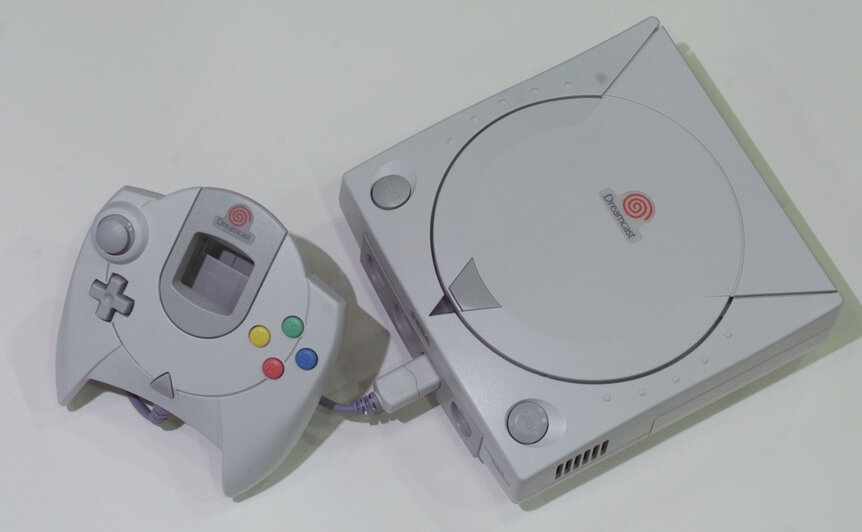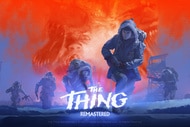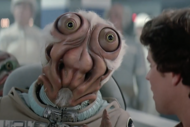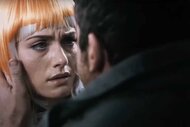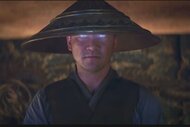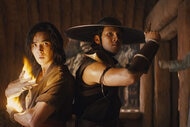Create a free profile to get unlimited access to exclusive videos, sweepstakes, and more!
9.9.99: SEGA Dreamcast still as cool as ever 20 years later

It's been 20 years to the day since SEGA released its last video game console, and though it only lived a brief two years, the Dreamcast remains one of the most influential video game platforms in history.
It was also just really damn cool.
SEGA tried to get a jumpstart on the next-generation video game wars with the Dreamcast at the end of the 1990s, dropping support for its previous console, the Saturn, and moving ahead with developing the Dreamcast, with aims to beat Sony's PlayStation 2 to market. The timing worked, but a head start still wasn't enough to successfully compete with the behemoth PlayStation brand. With flagging sales, a lack of third-party support, and PS2s selling like hotcakes, SEGA pulled the plug on the Dreamcast in 2001 and shifted the company to software-only, and it's still developing games for Nintendo, Sony, and Microsoft consoles.
But for those brief two years? The Dreamcast was on the cutting edge in everything from graphics to games to connectivity. The system came standard with a 56K modem built in, and games such as Phantasy Star Online, ChuChu Rocket!, Quake III, and the 2K Sports series helped pave the way for the online console gaming ecosystem we know and love today. It also featured dual-screen tech in the controllers, thanks to the VMU memory cards, which were basically little handheld mini-Gameboys you popped into an open slot on the controller.
Put simply, this thing was a console generation or two ahead of its time, cutting its teeth doing all the stuff that would become the norm just a few years down the line.
SEGA even went throwback edgy and weird for the marketing campaign, channeling some of that Genesis-era "SEGA does what Nintendon't" attitude. The ads featured smartass comments about how the system is "thinking," focused around the quirkier gameplay styles and titles that led the early games line-up. In a world where the PlayStation and N64 were winding down and getting close to the end of their life cycles, the Dreamcast just screamed cool.
Twenty years later, though, all that really matters is the games — and the Dreamcast had more classics jammed into its brief two-year life span than most systems can muster in a decade. The Sonic Adventure titles are still blisteringly fast, while RPGs such as Skies of Arcadia and Phantasy Star Online still land on most best-of lists to this day (and still command a high price on eBay to boot). Shenmue I & II were some of the first and most ambitious open-world games ever created, and remain stunning works of art all their own (with a crowdfunded sequel on the way for modern consoles aimed to finish the long-gestating story).
The system also brought arcade-caliber graphics to the living room, with faithful adaptations of hits such as Crazy Taxi, House of the Dead 2, SEGA Bass Fishing (complete with fishing rod peripheral), and Marvel vs Capcom 2 looking just as sharp as their coin-chomping counterparts. Games such as Soul Calibur, Dead or Alive 2, and Resident Evil: Code Veronica also pushed the boundaries of what you could do with graphics at the time. The Power Stone franchise broke ground for massive co-op fighters, with interactive environments that let you throw pretty much anything at your opponent.
But it's in the weird stuff where the Dreamcast truly shined. It featured games you couldn't find anywhere else because, well, no one else was audacious enough to actually try and make them.
Seaman took the virtual pet genre to a truly weird level, with players interacting with a man-faced fish via a microphone peripheral (with Leonard Nimoy himself providing narration). Jet Grind Radio used cel-shaded graphics to build a button-pusher around skate culture and graffiti tagging. Space Channel 5 pioneered the dance game genre around Ulala's alien-fighting go-go boots. The experimental Rez was a trippy shooter that blended music and rhythm, and ChuChu Rocket was an insanely simple — but wildly addictive — puzzle game that feels like a better fit for a modern smartphone than an early 2000s console. Then there's Samba de Amigo, a maraca-shaking rhythm game that literally featured a pair of maraca controllers.
The Dreamcast game line-up was unlike anything that came before it, and really, anything that's come after it. There's a reason plenty of fans still scour eBay and vintage game shops to keep their libraries rolling, and the reason the still-fervent fan community has literally put together an SD-card console mod designed to keep the system working for decades to come, once the GD-ROM drives and disks all rot and break.
SEGA made something undeniably cool and weird, and that's why fans are still playing it and talking about it two decades later. It resonated then and it resonates now. Here's to 20 more years, and here's hoping maybe SEGA wises up and give us a Dreamcast Mini by then, too.
